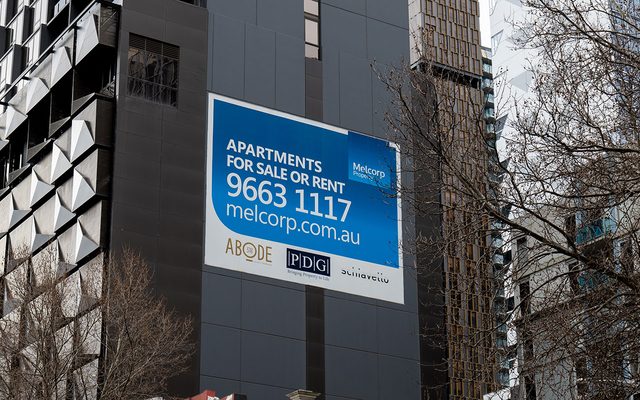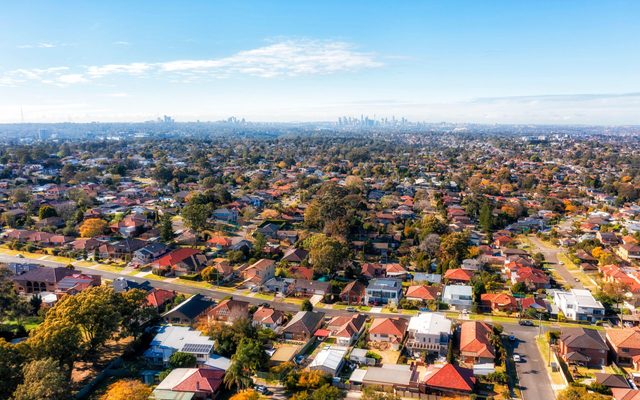This article is from the Australian Property Journal archive
THE Australian housing boom is officially over, investment bank UBS has declared.
In a research note to clients, UBS economists George Tharenou and Carlos Cacho said house prices are flat lining with growth at 0.0% in October following a 0.2% gain in the previous month, and slowing sharply to 6.6% annually – well down a cycle high of 10.4% in May.
The October result is the weakest since March 2016.
The economists noted that dwelling price growth continued a sharp slowing over recent months – especially after regulators announced a second phase of macroprudential policy tightening in March with a cap on interest-only home loans.
“Overall, Australia’s world record housing boom is ‘officially’ over, after a large ‘upswing’ of 6556% price growth in 55 years,” Tharenou declared.
“After dwelling price growth was resilient at a booming ~10% y/y pace earlier this year, there is now a persistent and sharp slowdown unfolding, as a lagged response to macroprudential tightening and ‘out of cycle’ mortgage rate hikes.
“This is broadly consistent with our housing deep dive ‘calling the top’, which forecast a moderation to 7% y/y by end-17, before dropping further to 0-3% y/y in 2018E,” he said.
Tharehou added that the weakness in auction clearance rates and the near flat growth in prices in the last five months, suggest the cooling may be happening a bit more quickly than expected.
“Price growth now seems likely to end 2017 around 5% y/y, below our 7% expectation.
“This slowdown in house prices has been ~coincident with a sharp slowing of investor housing credit growth to a ~5.5% annualised pace in the last three months to Sep-17 (with total private credit growth also slowing to 0.3% m/m, and ticking down to 5.4% y/y).
“This suggests a tightening of financial conditions is unfolding, which we expect to weigh on consumption growth ahead via a fading household wealth effect, keeping the RBA on hold until 2H-18,” Tharenou said.
Meanwhile UBS said the ‘real’ side of housing activity remains a bit more resilient than expected, with Q2 dwelling commencements still holding up at a strong level of 212k annualised, which has likely been supported by record ‘people growth’.
“Nonetheless, commencements are still expected to fall further to 205k in 2017 and 185k in 2018 (which also sees GDP-basis real dwelling investment fall ahead),” they said.
Earlier this week Credit Suisse declared that the nation’s leading market, Sydney, has not only cooled, it has turned cold, due to the withdrawal of Chinese capital.
Sydney auction clearance rates have been languishing around 60-65% compared to 75% a year ago, and Credit Suisse warns that house prices tend to fall when clearance rates are below 60%.The report also notes that Sydney auction clearance rates have been languishing around 60-65% compared to 75% a year ago, and Credit Suisse warns that house prices tend to fall when clearance rates are below 60%.
Over the past two weekends, Sydney’s auction clearance rate was 57.9% and 65%, according to Domain.
“This is a significant development because recent RBA analysis suggests that a 60% clearance rate is typically the break-even point for house price inflation,”
Credit Suisse even tipped the Reserve Bank could intervene and lower interest rates further to stimulate demand.
“We understand that policy needs to be set on what is known, rather than what is unknown, and Chinese capital flows are a very big unknown because of the absence of high-quality and timely data.
“But the issue for us is that the recent shift down in Chinese capital flows is having a visible, negative impact on house prices and consumer spending now,”
“We believe that the RBA will need to cut rates further to deal with the housing market slowdown in train.
“Without a healthy housing market, the economy does not have other growth drivers to lean on.” Credit Suisse said.
Australian Property Journal




